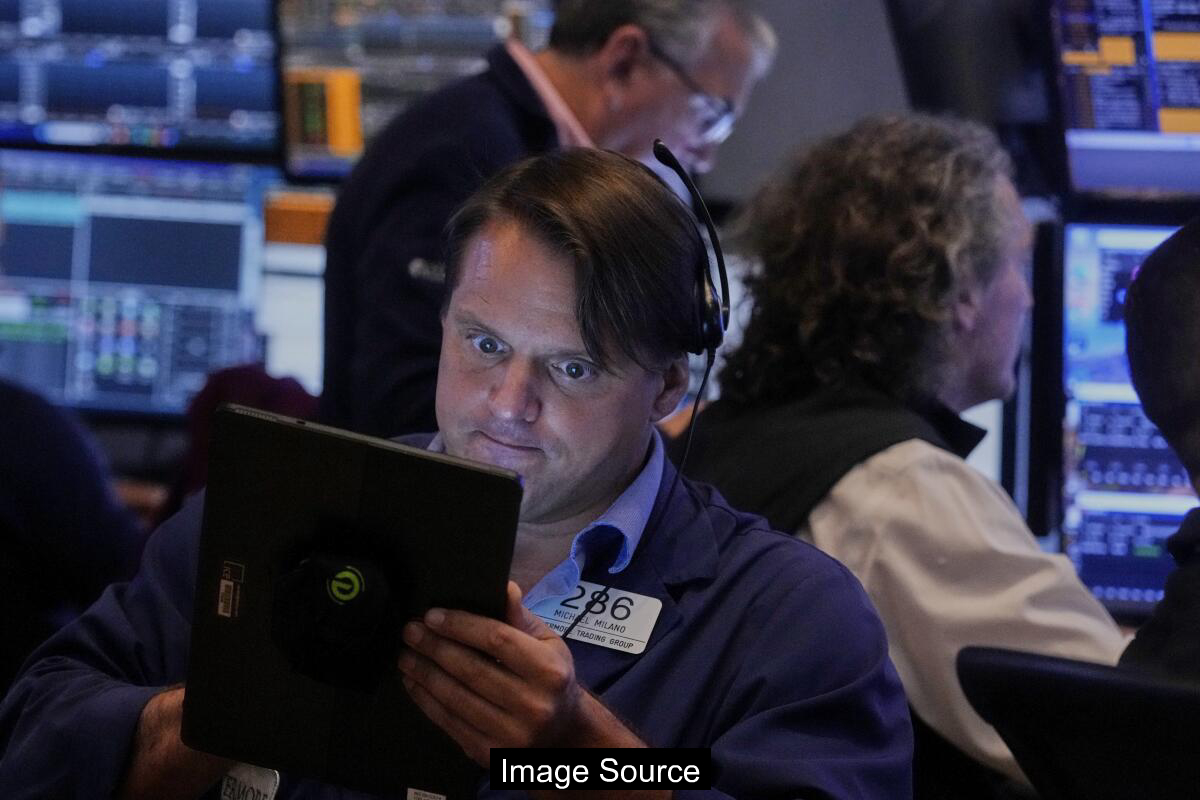U.S. stock indexes staged a late-session comeback on Wednesday, driven by strong performance in technology and semiconductor stocks. The S&P 500 and Nasdaq Composite approached record levels, continuing a robust market rally that has been fueled by optimism about artificial intelligence and potential Federal Reserve interest rate cuts.

Market Dynamics: A Day of Modest Gains
Wall Street experienced a measured trading session, with major indexes hovering near recent all-time highs. The Standard & Poor’s 500 closed 0.4% higher after oscillating between small gains and losses throughout the day. The benchmark index finished just 2.6 points below its record high set earlier in the month.
Sector performance showed mixed signals, with technology, financial, and industrial stocks providing support. Notably, Nvidia rose 1.1% while JPMorgan Chase added 1.2%. Boeing stood out with a 3.5% surge after Korean Air announced a substantial $50-billion aircraft procurement deal.
The market’s uneven performance followed significant gains from the previous week, underpinned by expectations of potential Federal Reserve interest rate cuts. Investors remained cautiously optimistic about the economic landscape.
Federal Reserve and Political Tensions
Political pressures surrounding the Federal Reserve intensified with President Trump’s controversial move to remove Federal Reserve Governor Lisa Cook. Cook’s lawyer indicated potential legal action to prevent her removal, highlighting the ongoing dispute between the administration and the central bank.
Despite the political turbulence, market analysts like Ulrike Hoffmann-Burchardi from UBS Global Wealth Management expect the Fed to maintain its independent decision-making process. Wall Street continues to anticipate a potential interest rate cut, with traders showing an 87% probability of a quarter-point reduction at the upcoming September meeting.
The Federal Reserve’s primary focus remains managing inflation and maintaining a stable job market. Its benchmark interest rate policy has been carefully calibrated to balance economic growth with inflationary pressures.
Understanding Market Indicators
Treasury yields provided additional insights into market sentiment, with the 10-year Treasury yield declining to 4.26%. The two-year Treasury yield, which closely tracks potential Fed actions, slipped from 3.73% to 3.68%.
Upcoming economic indicators will offer crucial insights into the market’s trajectory. The personal consumption expenditures index, set for release, is expected to show inflation around 2.6% compared to the previous year. Economists and investors are closely monitoring these metrics.
Consumer confidence showed a modest decline in August, reflecting growing anxiety about the employment market. This trend has persisted for eight consecutive months, signaling potential economic challenges ahead.
Market Fundamentals FAQ
What factors are currently influencing stock market performance? Political tensions, Federal Reserve policies, and inflation expectations are primary drivers of current market dynamics. Sector-specific performance and global economic indicators also play significant roles.
How might interest rate changes impact investments? Lower interest rates typically make borrowing more accessible, potentially stimulating investment and spending. However, they can also introduce inflationary risks if not carefully managed.
The market remains adaptive, with investors continuously reassessing their strategies based on emerging economic signals and geopolitical developments.
Global Market Perspectives
International markets reflected the complex economic environment, with European and Asian markets closing lower. Crude oil prices experienced a decline, indicating potential global economic headwinds.
Businesses have been signaling potential cost pressures due to tariff policies, adding another layer of complexity to the economic landscape. The interplay between trade policies, inflation, and market performance remains intricate.
Despite challenges, the overall market demonstrated resilience. The S&P 500 rose 26.62 points to 6,465.94, the Dow gained 135.60 points to 45,418.07, and the Nasdaq added 94.98 points to 21,544.27.
Strategic Pointers
The current market environment demands nuanced investment strategies that account for political uncertainties, potential interest rate shifts, and sector-specific dynamics. Diversification remains a key risk management approach.
Investors should closely monitor upcoming economic indicators, particularly the personal consumption expenditures index and employment market reports. These will provide critical insights into potential market movements.
While challenges exist, the market has demonstrated consistent adaptability. Maintaining a long-term perspective and staying informed about macroeconomic trends will be crucial for navigating the current financial landscape.
※ This article summarizes publicly available reporting and is provided for general information only. It is not legal, medical, or investment advice. Please consult a qualified professional for decisions.
Source: latimes.com